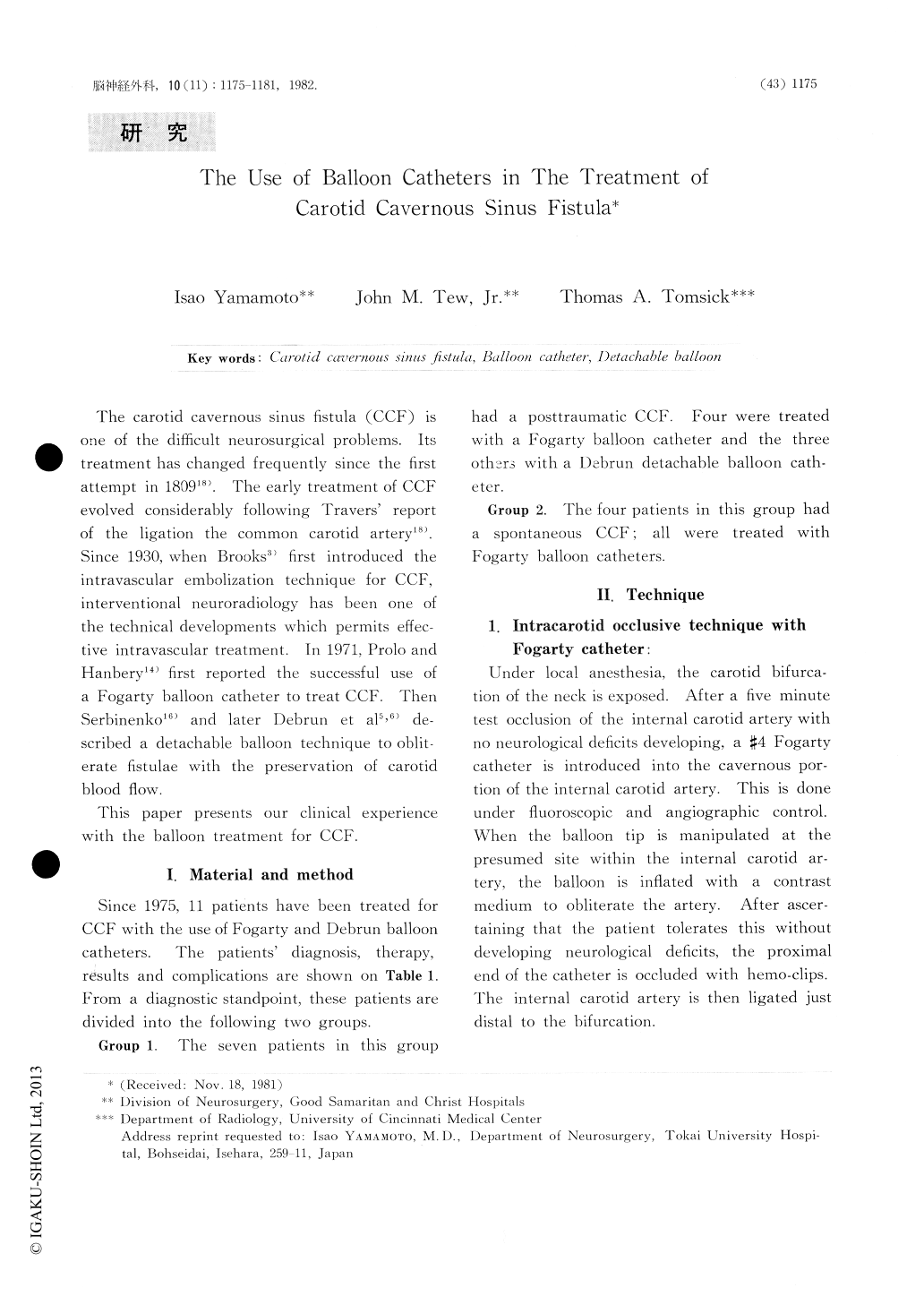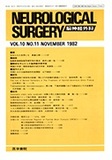Japanese
English
- 有料閲覧
- Abstract 文献概要
- 1ページ目 Look Inside
近年のinterventiollal neuroradlologyの進歩は,従来議論のあった頸動脈海綿書静脈洞瘻(CCF)に対する治療法の1つとして注目されている,
今回11例のCCF(外傷性7例,特発性4例)に対し,Fogartycatheterと1)ebrunのdetachable balloonによる治療を試みた.Fogarty catheterによるintracarotid occluslonを施1書fした症例は8例で,うち外傷性の4例全例に,特発性では4例中1例に症状の改善を認めた書しかし外傷性の1例で術後balloonのoverinflationによる外転神経麻痺を,特発性の1例で脳梗塞,2例に術後の血管写でfistulaの残存を認めた.Debrunのdetachable balloonを用いた外傷性の3例中2例で内頸動脈の血流を維持し,かつfistulaの閉塞に成功した.1例は術中balloonのpremature ruptureにより閉塞に失敗した.
The carotid cavernous sinus fistula (CCF) isone of the difficult neurosurgical problems. Itstreatment has changed frequently since the firstattempt in 180918). The early treatment of CCFevolved considerably following Travers' reportof the ligation the common carotid artery18). Since 1930, when Brooks3) first introduced theintravascular embolization technique for CCF, interventional neuroradiology has been one ofthe technical developments which permits effec—tive intravascular treatment. In 1971, Prolo andHanbery14) first reported the successful use ofa Fogarty balloon catheter to treat CCF. ThenSerbinenko16) and later Debrun et al5,6) described a detachable balloon technique to obliterate fistulae with the preservation of carotidblood flow.
This paper presents our clinical experiencewith the balloon treatment for CCF.

Copyright © 1982, Igaku-Shoin Ltd. All rights reserved.


